Introduction
What if you could improve campaign performance without increasing your budget? Or test dozens of ad variations in real time, without burning out your team?
That’s not a hypothetical anymore. It’s what AI in PPC management is making possible for modern marketers.
Over the past few years, PPC platforms have become more complex, data-heavy, and fast-moving. Managing campaigns manually, tweaking bids, testing creatives, juggling platform algorithms, can feel like playing catch-up every single day. And for teams trying to scale across multiple channels, that workload quickly becomes unmanageable.
That’s where AI comes in, not as a replacement for your team, but as a strategic partner.
AI in PPC helps you make smarter, faster decisions by automating bidding, budgeting, and creative testing. It cuts down manual work and improves campaign efficiency.
In this blog, we’ll break down how AI actually fits into your PPC strategy, which tools are leading the way, where it drives the most value, and how to strike the right balance between automation and human oversight.
Whether you’re managing campaigns in-house or running an agency, this guide will help you rethink what smart, scalable PPC looks like in 2025 and beyond.
How AI Works in PPC Campaigns (Step-by-Step)
.avif)
AI PPC management now centers on algorithms that continuously analyze performance signals and adjust accordingly—whether it's AI adjusting PPC bids in real-time or reallocating budgets to maximize ROAS. Leading platforms like Google Ads Smart Bidding, Meta Advantage+, and Performance Max combine AI and machine learning to simplify complex optimization layers while delivering precision.
Let’s look at how AI actually fits into your PPC workflow, step by step:
1. Keyword Targeting
AI transforms keyword research from a static, manual process into a dynamic, real-time optimization engine. Instead of relying on outdated keyword lists or hunches, AI processes millions of data points, search queries, user intent signals, behavioral trends, and historical performance to identify which terms are most likely to drive conversions today.
How it works:
- Intent-first filtering: AI prioritizes keywords based on user behavior (e.g., clicking pricing pages, time spent on site), not just search volume.
- Real-time updates: Algorithms adapt keyword targeting as trends change, like sudden spikes in seasonal or competitor-related queries.
- Contextual grouping: Keywords are clustered into themes or intent buckets (e.g., awareness, consideration, decision), which streamlines ad group creation and messaging.
Platforms like Google Ads Smart Campaigns and Performance Max use this AI-powered keyword intelligence to auto-target search queries even outside your predefined lists.
At RevvGrowth, we’re actively experimenting with Google Ads Performance Max in our internal campaigns to explore how well its AI-driven targeting adapts to niche B2B segments. Early signs show promise, especially in uncovering mid-funnel queries we might have otherwise missed.
2. Smart Bidding
We use Google's AI-powered bidding strategies like Target CPA, Maximize Conversions, and Enhanced CPC to simplify and scale bid management for our clients.
These systems evaluate every auction moment-by-moment, adjusting bids based on hundreds of variables like device type, search query, previous engagement, time of day, and even competitor bidding.
How we approach it:
- Goal alignment: We align bidding strategies with your business goals, be it lower CPA, higher ROAS, or more trial sign-ups. Our team monitors performance by keyword, ad group, audience segment, and adjusts inputs like negatives, creatives, and targeting to fuel better AI decisions over time.
- Auction-time signals: Google’s Smart Bidding uses real-time signals such as user intent, location, device, and behavior to determine the optimal bid for each impression. This ensures every auction is driven by relevance and conversion probability.
- Performance feedback loop: As campaigns run, the AI models train on historical data and performance trends, enabling better bid predictions and smarter budget utilization with each iteration.
- Hands-on monitoring + automation: While automation handles the heavy lifting, our team conducts weekly bid and pacing audits to ensure budgets are healthy, high-performing campaigns are scaled, and underperforming segments are reworked.
Google says that over 80% of advertisers now use automated bidding. With the right inputs and human feedback, it delivers the scale, efficiency, and performance modern PPC demands.
3. Ad Creative Optimization: Letting the Data Choose What Performs Best
In PPC, ad creative is everything. It's what makes a user pause, click, and convert. But writing and testing copy manually, especially for multiple segments and platforms, is a bottleneck. AI changes that.
How it works:
- Ad variation at scale: Tools like ChatGPT, Copy.ai, or Jasper can generate dozens of headline and description variations in seconds, tailored to your CTA or product. We use ChatGPT to generate headline and description variations in bulk, tailored to different CTAs, audience segments, and funnel stages.
- Responsive Search Ads (RSAs): Google Ads auto-tests combinations of your input copy (up to 15 headlines and 4 descriptions) and learns which combinations perform best for different user segments. After switching to RSAs, many brands have reported 5–15% increases in CTR and 61% more conversions, simply from improved ad relevance.
- Performance-driven rotation: These AI-generated variants are A/B tested automatically in platforms like Google Ads and Meta, and the best-performing combinations are prioritized using real-time performance data.
Instead of spending hours writing and reviewing ad copy line by line, we now deploy batch-tested creatives using ChatGPT in minutes at Revv Growth.
We’ve built prompt templates aligned to our internal messaging frameworks, brand voice, and funnel stages (awareness, consideration, conversion). What used to take half a day, now happens in one strategic prompt, saving time and accelerating launch cycles.
4. Budget Management
AI doesn’t just automate bidding, it also reallocates your overall budget across campaigns, ad sets, and platforms based on performance. It continuously analyzes which campaigns are hitting your KPIs and directs more spend there, while cutting losses quickly on underperformers.
How it works:
- Live performance monitoring: AI evaluates spend, CPC, CTR, CPA, and ROAS daily (often hourly). We track cost per MQL, ROAS, and funnel-stage efficiency across every campaign, in real time, so we can move fast when something’s working.
- Cross-campaign comparisons: If Campaign A is getting 3x ROAS and Campaign B is tanking, AI shifts more budget to A instantly.
- Budget pacing algorithms: Google’s AI ensures our budget doesn’t burn out too quickly in the day or month, and suggests budget increases based on missed impression share.
This is native in Google Ads' budget recommendations, and also available in platforms like Marin Software, Skai, or Adobe Advertising Cloud.
In one campaign, RevvGrowth helped HyperVerge reallocate budget dynamically across high-performing ad sets, leading to a 327% increase in MQLs in just 3 months, without increasing total ad spend. That level of efficiency is only possible when budget management becomes adaptive, not static.
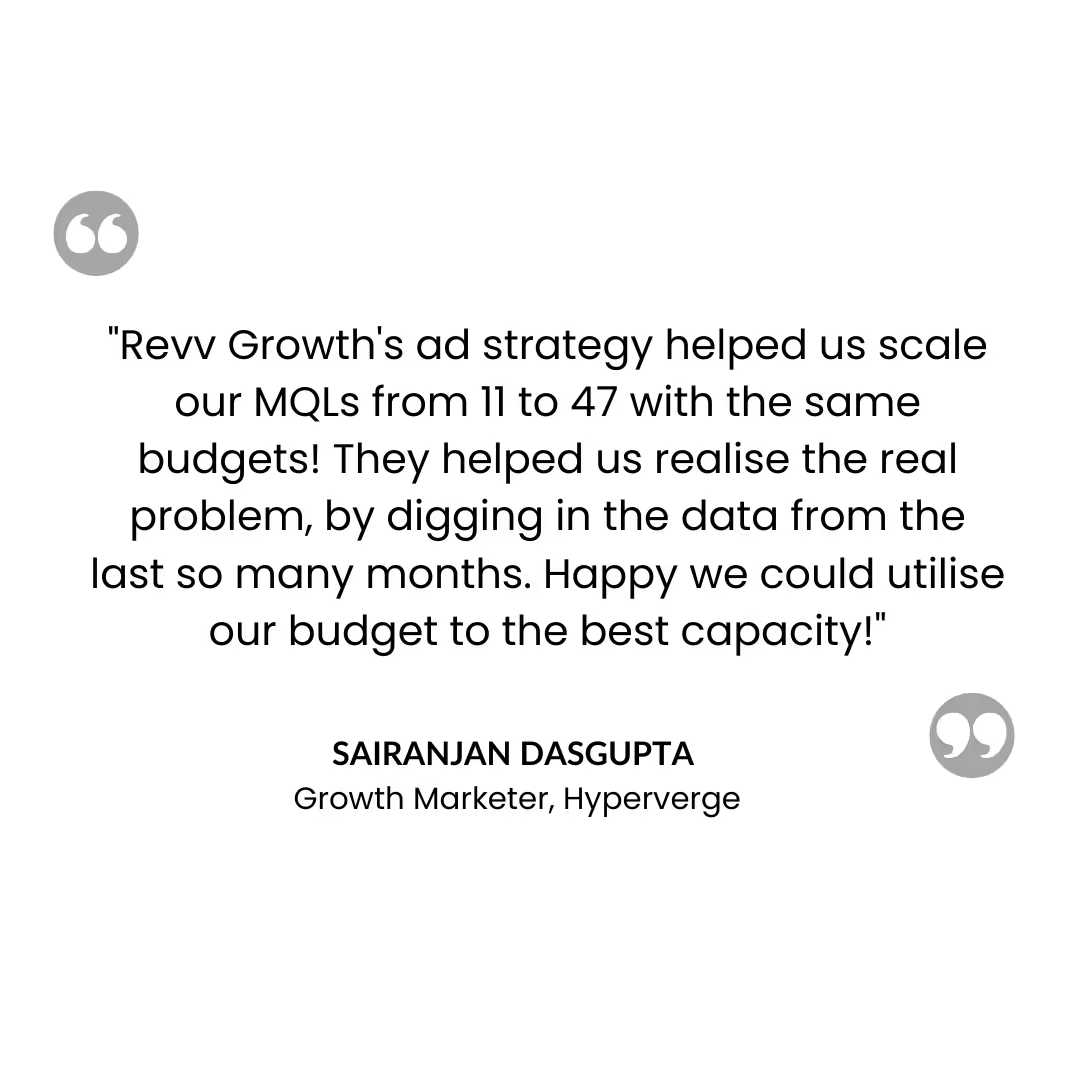
Read more – How we helped Hyperverge go from 11 to 47 MQLs in 3 months with a $4000 Google Ads budget
5. Performance Reporting
Now with integrations like Looker Studio, Supermetrics, or even custom ChatGPT models, AI becomes your on-demand marketing analyst, which is working for you in real-time.
How we apply it at RevvGrowth:
- Anomaly detection: AI flags any deviations from baseline performance, such as CTR dropping 25% or CPA spiking. We use AI models to flag performance deviations, like sudden spikes in CPA or drops in CTR, often within hours, not days.
- Root-cause analysis: Our dashboards don’t just show a performance dip, they tell us why. For instance, a decline in demo sign-ups might be tied to lower spend in a high-converting geo or a messaging mismatch on a new landing page.
- Predictive forecasting: AI models forecast lead flow, CPL, and ROAS for the week ahead based on historical data and seasonal patterns, so we proactively adjust budgets and messaging instead of reacting late.
- Actionable insights via ChatGPT: We've built custom GPT workflows trained on our performance data and campaign structure. Instead of digging through dashboards, we can now ask: “Why did MQLs drop this week?” and get an instant, context-rich answer across channels.
These AI tools help us spot what’s working, catch issues before they snowball, and keep our campaigns moving forward, with clarity and confidence.
AI PPC Agency Role
The rise of AI PPC agencies specializing in bespoke campaign strategy and AI-optimized PPC campaigns is a significant trend for 2026.
These agencies leverage advanced AI tools to manage multi-platform campaigns at scale, provide actionable reporting, and integrate cross-channel performance data to maximize ROI. Agencies blend human expertise with AI automation to avoid the pitfalls of "black box" AI, ensuring strategies remain adaptive and transparent.
Key Benefits of Using AI in PPC
.avif)
Adopting AI-powered tools in PPC offers clear, measurable benefits, fueling smarter decisions, better targeting, and sustainable campaign growth. Here’s how AI can significantly improve your ad strategy:
1. Faster Decision-Making with Real-Time Data
With AI, campaign decisions aren’t based on yesterday’s numbers. Machine learning algorithms analyze live performance signals to instantly adjust bids, pause underperforming ads, or reallocate budget. This means your campaigns stay responsive to what’s working now, not what worked last week.
2. Higher Return on Ad Spend (ROAS) & Lower CPA
McKinsey reports that organizations investing significantly in AI see a 10–20% increase in marketing ROI and sales ROI . AI tools continuously optimise for efficiency, allocating budget to the highest-performing segments, targeting the right users, and refining ad delivery in real time. The result? Better returns without increasing spend, and more conversions at a lower cost per acquisition.
3. Smarter Audience Segmentation & Targeting
Instead of using static demographics, AI segments audiences based on intent, behaviour, and context. It identifies who’s most likely to convert and delivers personalised ads that speak directly to them, making each impression more valuable.
4. Reduced Manual Workload
Routine tasks like bid adjustments, A/B testing creatives, or managing budgets across channels can be time-consuming. AI takes over those repetitive tasks, freeing your team to focus on creative strategy, messaging, and growth.
5. More Scalable, Error-Resistant Campaign Structures
Data from Google shows that advertisers leveraging AI-powered smart bidding, especially with broad match, see up to 35% more conversions.
When campaigns span multiple platforms and audience segments, things can get messy. AI brings structure, ensuring consistency, reducing human errors, and allowing campaigns to scale smoothly without compromising performance or control.
AI-Optimized PPC Campaigns & Bid Adjustments
Modern AI-optimized PPC campaigns utilize machine learning not only for bid automation but deeper audience segmentation and creative optimization.
These campaigns allow advertisers to achieve higher conversion rates at lower CPAs by dynamically adjusting bids based on user behaviors, device types, geo-location, and evolving competitive landscapes.
Tools such as Optmyzr, MarinOne, and Skai offer comprehensive AI-powered bid adjustment features that deliver granular control and responsive budget pacing.
Top Tools & Platforms Offering AI PPC Services
If you’re ready to scale PPC performance with AI, the next step is choosing the right tools. At Revv Growth, we've built a tightly integrated stack of AI-powered platforms to drive everything from smarter bidding and creative generation to cross-channel insights and lead integrations.
Here's how we leverage each tool’s capabilities for maximum impact and how marketers are using them:
1. Google Ads (Smart Bidding, RSA, DSA, Performance Max)
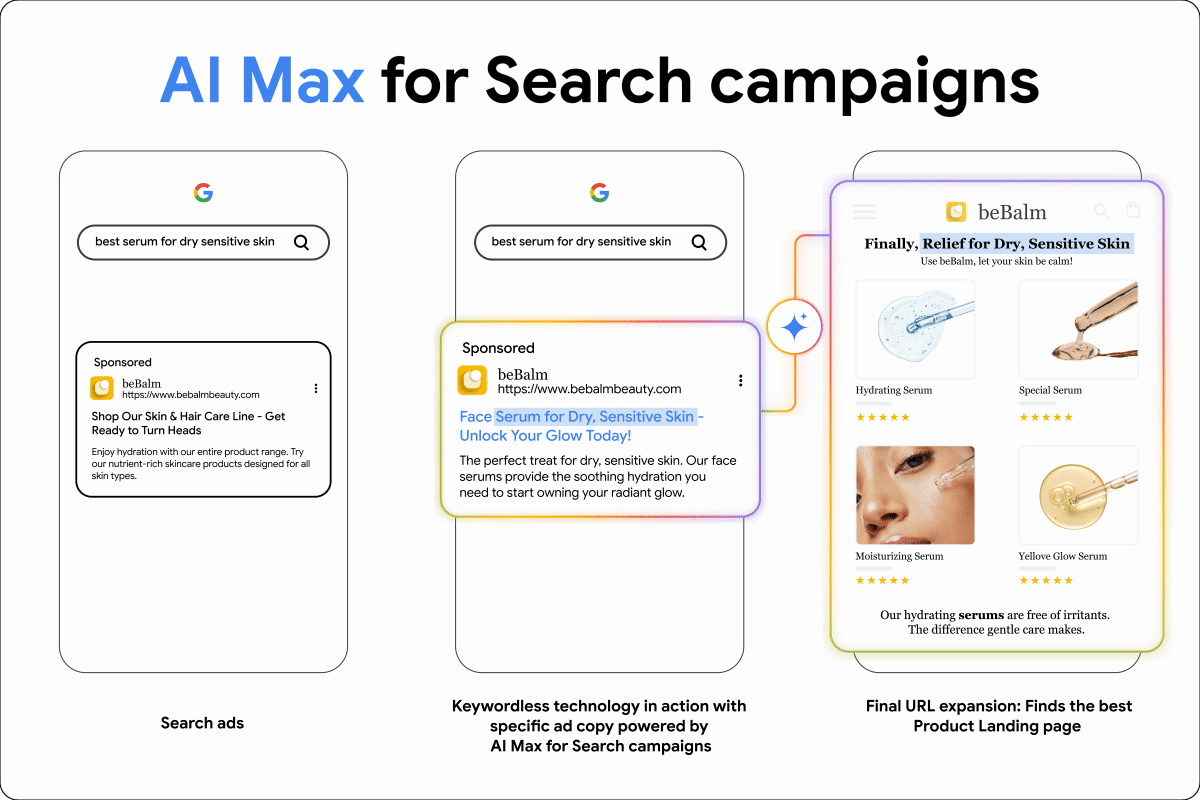
Google’s built-in machine learning tool adjusts bids in real time for each auction across Search, Display, Shopping, and Performance Max campaigns. It supports strategies like Target CPA, Target ROAS, Maximize Conversions, and Maximize Conversion Value.
We’re experimenting extensively with Google’s AI-powered features at RevvGrowth to push performance boundaries. Smart Bidding strategies like Target CPA, Maximize Conversions, and Enhanced CPC help us dynamically optimize bids in real-time.
We use Responsive Search Ads (RSA) and Dynamic Search Ads (DSA) to let Google’s AI test and serve the best-performing ad combinations.
While Performance Max promises scale across channels, it’s not always a sure win for lead-gen or high-intent funnels. Marketers online report mixed outcomes depending on structure, targeting, and exclusions.
Here’s how different marketers are using PMax effectively:
- Balancing Quality vs. Scale: One user ran side-by-side campaigns: Search (with tight match keywords and high intent targeting) and PMax (with broader discovery-focused creatives). After 3 weeks, they observed PMax delivering more incremental conversions, but at slightly lower quality than Search.
Their advice: Use Search for high-efficiency and lead qualification, while PMax explores untapped volume across YouTube, Gmail, Display, and Discovery.
- Avoiding Brand Keyword Cannibalization: A marketer found their branded CPCs spiking. On pausing PMax, the branded CPCs normalised. They realised PMax was competing with their own Search campaign, despite being technically "separate" campaigns.
The solution? Use negative keyword exclusions and URL exclusions to guide PMax away from core search queries that are better handled by Search ads.
- Expanding Into New Audiences: Another user shared that PMax helped them reach audiences via YouTube and Discovery who never clicked on Search ads before. While the lead quality was lower, it expanded total volume, which they used to nurture through email automation. This worked particularly well for longer sales cycles and SaaS funnels.
With Performance Max, you can run cross-channel campaigns (Search, Display, YouTube, Discovery, Shopping) using unified creative assets. We've found it scales conversions and audience reach when layered properly with campaign structure and goals.
2. ChatGPT – Ad Copy Ideation & Optimization
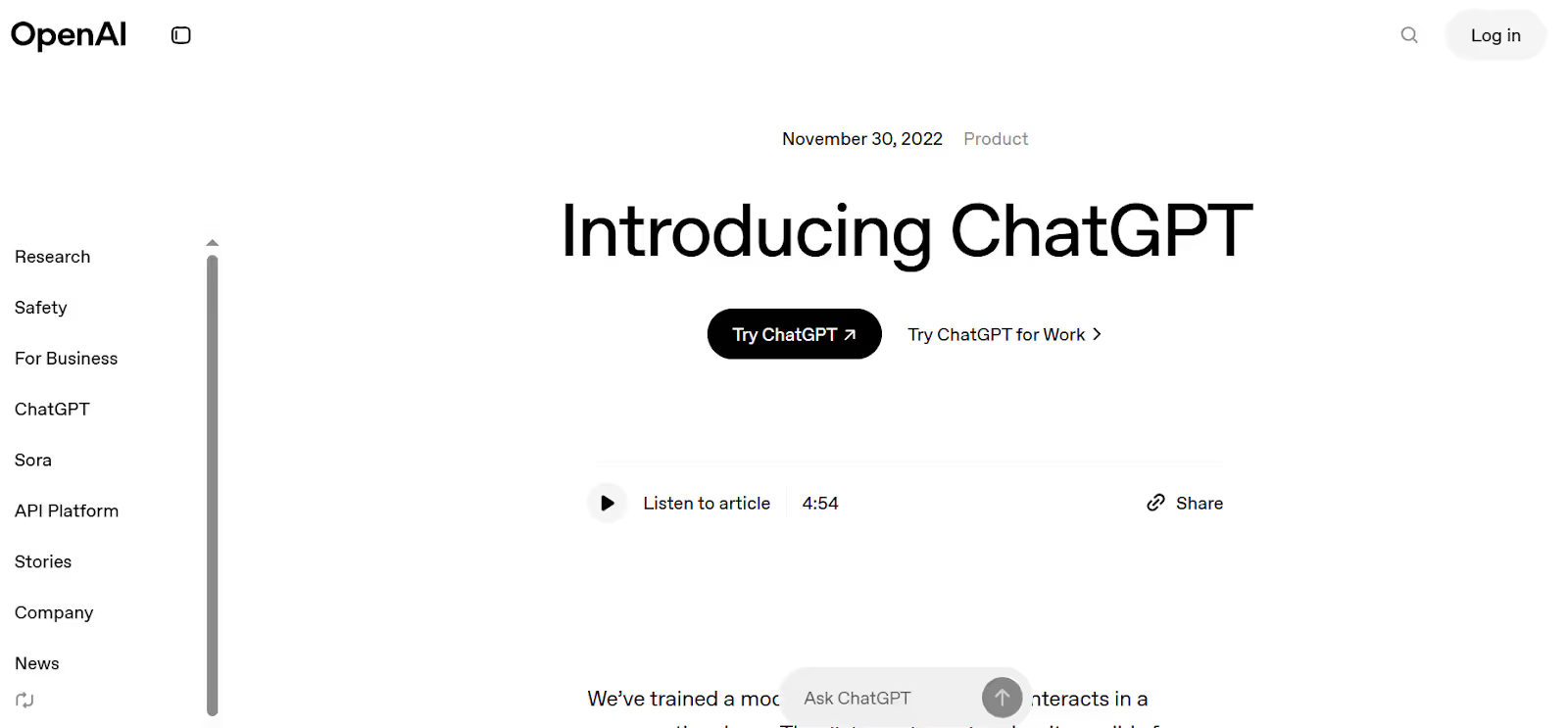
ChatGPT is an advanced LLM that generates creative concepts, headline variations, and structured messaging frameworks, all based on prompts tailored to your brand voice, offers, and funnel stage.
How We're Using It at RevvGrowth
We’re using ChatGPT to generate bulk ad copy, streamline A/B testing, and inject consistency into campaigns. Our process:
- We create persona-driven prompt templates (e.g., “Write 10 RSA headline options for a CMO audience promoting a marketing SaaS trial”).
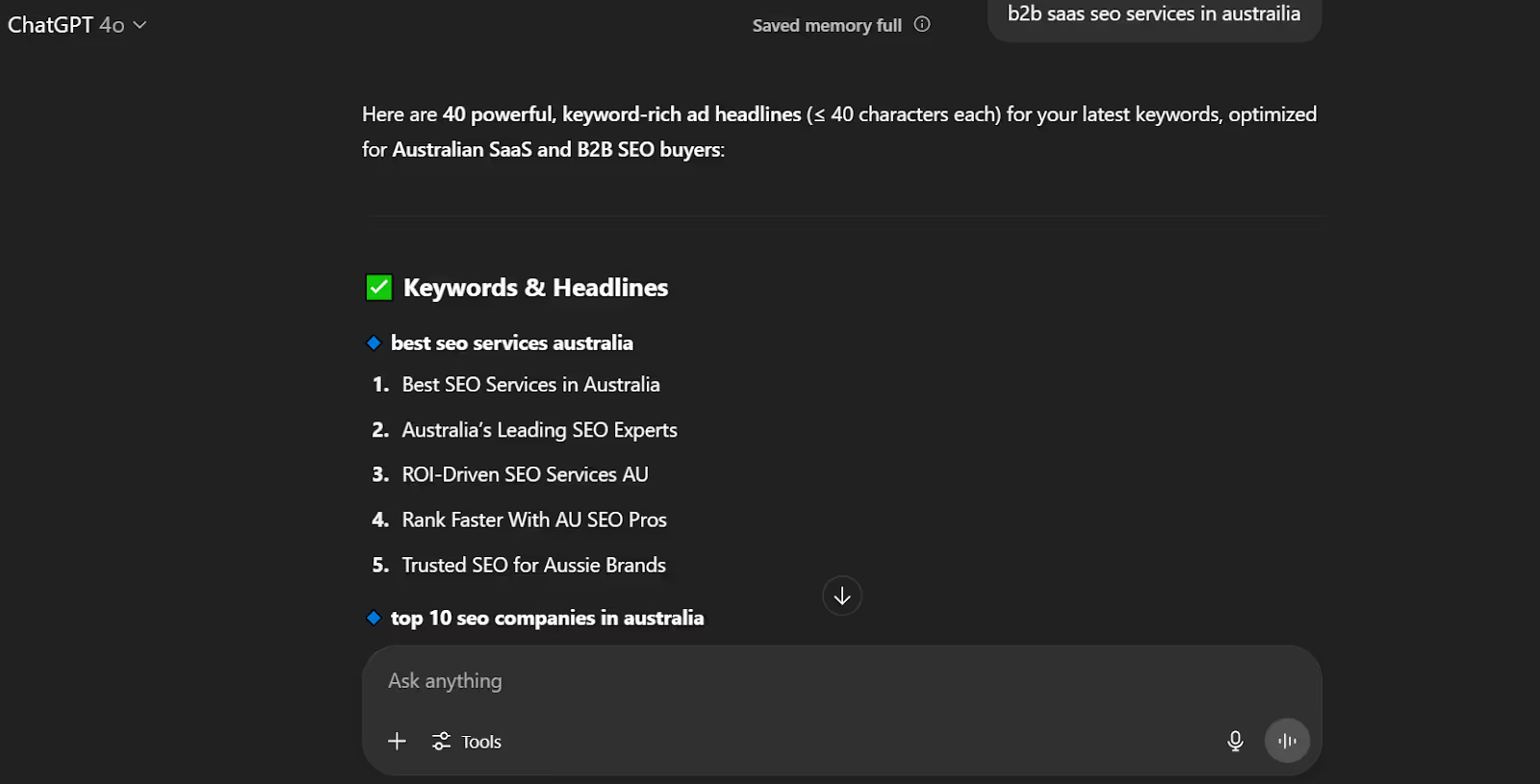
- We batch-generate headline-description pairs and upload directly into Google Ads for live testing.
- Weekly tests help us monitor performance and fine-tune prompts or brand framing for continuous improvement.
We’re not alone in this approach. Many performance marketers are using ChatGPT to shorten turnaround times, unstick creative bottlenecks, and scale experimentation. Here’s how it’s playing out in real campaigns:
- Faster Turnaround with Prompt Automation: One PPC professional shared that they used ChatGPT to generate 15 RSA headlines in under 10 minutes, tailored to a client’s landing page. This dramatically reduced their creative turnaround time and allowed quicker deployment of A/B tests across ad sets.
- Scaling Ads Across Product Lines: Another marketer developed a mega prompt that creates 12 variations of Google Ads in one go. They fed ChatGPT product details and a sample ad, then asked it to write in the same voice and tone. This helped scale consistent ad creatives across product lines.
- Overcoming Creative Block: Users noted that ChatGPT works well for breaking creative blocks. They often ask it to create three long-form versions of ad copy based on a landing page and then convert those into RSA headlines and descriptions for testing. It’s not about blindly using the output, but using it as a strong starting point.
- Better Brand Imitation with GPT-4o: With the rollout of GPT-4o, one marketer highlighted that ChatGPT now picks up tone and nuance better than ever before. By training it with just 1–2 ad samples, it could mirror voice, tone, and even structure to scale branded messaging across channels.
We’ve found that when you layer ChatGPT with Google Ads, RSA, and Smart Bidding, it acts as a creative force multiplier. But the real power lies in the feedback loop:
Generate → Test → Optimise prompts. That’s how we’re staying ahead of creative fatigue and consistently pushing better-performing ads live, week after week.
3. Make.com – Lead Integration & PPC Workflow Automation
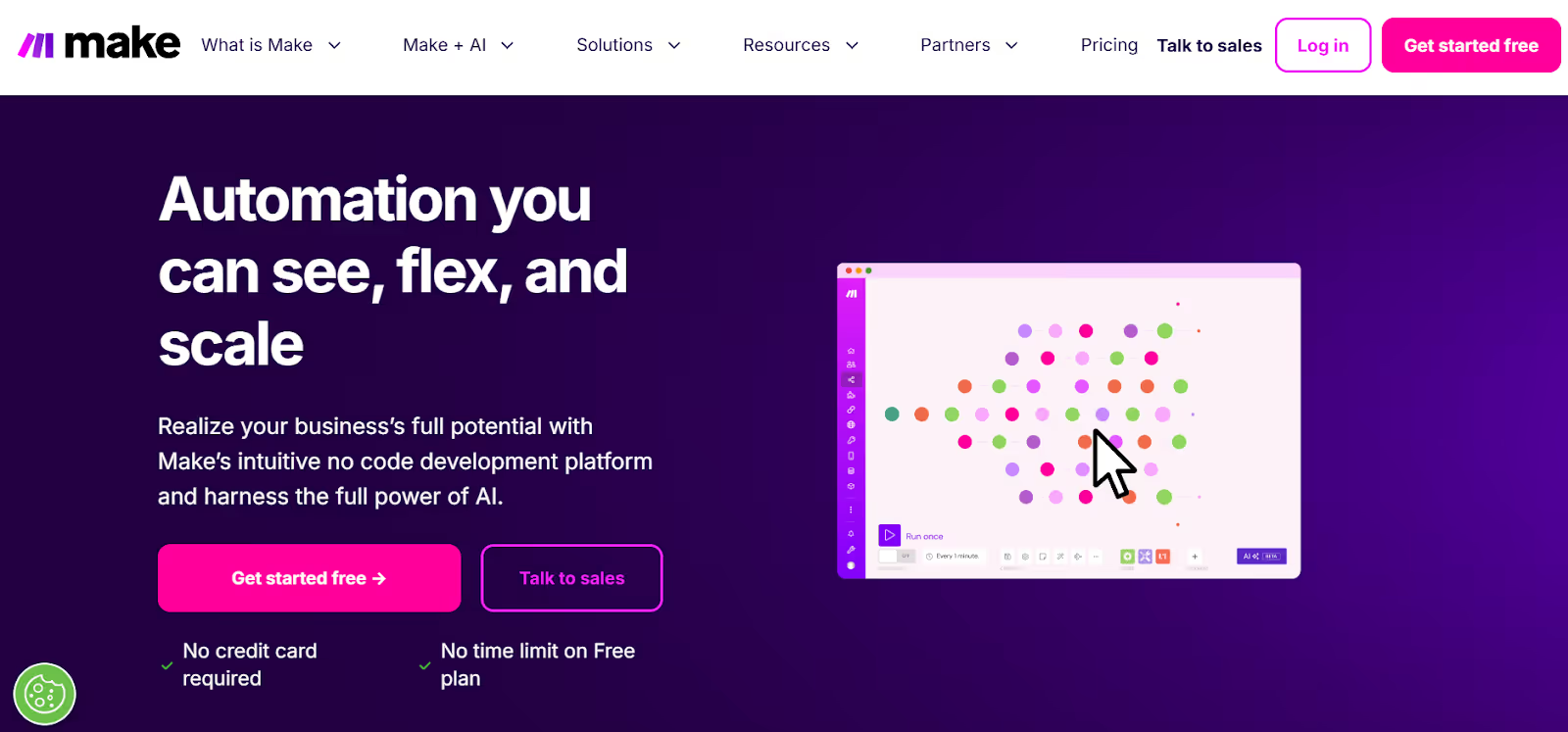
As paid campaigns scale across Google, Meta, and LinkedIn, stitching together lead data in real-time becomes critical. That’s where Make.com (formerly Integromat) shines. It acts as the invisible workflow layer between your ad platforms, CRM, Slack, Sheets, and more, without any code.
At RevvGrowth, we use Make extensively to automate our lead journeys and reduce time-to-contact for sales-qualified leads.
How We Use It at RevvGrowth
- Instant Lead Routing Across Platforms: Whether leads come from Meta forms, LinkedIn Lead Gen, or PMax landing pages, we route them instantly into CRMs like Zoho or HubSpot. No delays. No spreadsheets.
- Slack Notifications for Hot Leads: The moment a high-intent lead submits a form (demo, pricing, strategy session), our team gets an automated Slack ping with all UTM + campaign data. This helps us reach out within 5–10 minutes of submission.
- UTM-Based Lead Prioritization: We use UTM parameters to dynamically assign leads to different SDRs or nurture tracks based on campaign source and intent.
- Validation and Enrichment Layer: Using Make + Webhooks, we run checks for phone/email validity. If any field fails validation, Make pauses the sync and flags it for manual review or enrichment.
This system has helped us cut lead response time, reduce routing errors, and drive higher demo conversions.
It’s not just us. Many performance teams are using Make.com to automate lead capture, speed up routing, and reduce manual errors. These real-world workflows show how it’s becoming a silent backbone of modern PPC ops:
- Instant Sync from Ads to CRM: One marketer used Make.com to automatically save every new lead and form attachment from Facebook and Google Ads into HubSpot CRM, eliminating the need for manual exports and edits. This automation ensures SDRs have immediate access to leads, enabling rapid follow-up.
- No-Code Workflow Setup: Another user shared how they connected a Google Form to Google Sheets with Make.com, remarking: “Automation is easier than I expected, no coding needed!” This highlights how even simple lead flows can be automated seamlessly.
- Campaign-Based Lead Routing: A PPC professional detailed how they implemented campaign-based routing: leads from branded search ads go to Sales Rep A, while Meta remarketing leads are assigned to Rep B, all automated through Make. This granular routing ensures better lead context and ownership.
- Built-in Lead Enrichment & QA: Others have added a validation layer where Make checks email and phone inputs before sending data to the CRM. If a lead fails, it’s paused and flagged for review, helping teams maintain clean pipelines without developer support.
Make.com empowers ad and ops teams to build robust, scalable workflows without writing a single line of code. It ensures the lead pipeline is fast, accurate, and tailored to your SDR process, making it an essential piece of any modern, multi-touch PPC strategy.
Want expert guidance or hands-on support setting up AI-powered PPC campaigns? Book a call with our PPC experts today and let’s make your ad budgets work harder and smarter.
What is the Most Efficient Platform for Managing Paid Search Ads at Scale?
While Google Ads remains the most dominant platform, efficient paid search management at scale often demands multi-platform solutions. Tools like Optmyzr, MarinOne, and Skai offer advanced automation, AI-driven bidding, cross-channel reporting, and predictive budget management.
These platforms integrate data from Google, Meta, Microsoft, Amazon, and more, optimizing campaigns holistically for the best ROI and operational efficiency.
For enterprise needs, Skai and MarinOne are leading solutions due to their scalability and extensive data integrations.
Getting Started with AI in Your PPC Strategy
AI has the potential to transform how you manage PPC, but only if you approach it with a clear plan. Instead of jumping into full automation, the smartest route is to build your AI-PPC workflow gradually. Start with a strong foundation, test early, and scale what works.
Here’s a practical roadmap to help you begin:
1. Conduct a PPC Account Audit
Start by reviewing your current campaigns to understand where AI can make the most impact. An audit will help identify:
- Which campaigns are underperforming
- Where you’re still relying on manual bidding, targeting, or reporting
- Whether your budget is being effectively distributed
- Gaps in data collection (e.g., missing conversion tracking or audience signals)
This gives you a clear map of what to automate and what still needs human touch.
2. Identify Repetitive Tasks Ideal for Automation
Not every task in PPC should be automated, but many time-consuming ones can be. Look for high-frequency, low-strategy tasks such as:
- Daily or weekly bid adjustments
- Keyword pruning or pausing underperformers
- Generating and sending campaign reports
- Budget pacing across multiple campaigns
- Refreshing ad creatives based on CTR drops
AI thrives on repeatability. Automating these areas frees up your team for strategic work like creative development, landing page testing, and audience research.
3. Set Clear Performance Baselines
Before introducing AI, document your current KPIs. Track at least 30 days of performance data for:
- CPA (Cost Per Acquisition)
- ROAS (Return on Ad Spend)
- CTR (Click-Through Rate)
- Impressions and conversions
- Ad frequency and quality score (if using Google Ads)
Why this matters: once AI is live, these benchmarks will help you measure impact accurately, without relying on gut feeling or disconnected metrics.
4. Choose Tools That Fit Your Budget and Goals
There’s no one-size-fits-all solution when it comes to AI in PPC. Your tool stack should depend on:
- Budget size: Some platforms are enterprise-grade, others are built for SMBs.
- Channels used: Are you focused on Google, Meta, LinkedIn, or running omnichannel ads?
- Team size and expertise: Choose tools that match your team’s technical comfort and workflow needs.
Start with native AI features in ad platforms, like Google’s Smart Bidding or Meta’s Advantage, then consider third-party tools for creative optimization, budget management, or cross-channel automation as you grow.
5. Pilot Test AI on a Small Scale
Avoid the temptation to overhaul everything at once. Instead, choose one or two campaigns as test beds. For example:
- A high-volume search campaign with enough conversions to fuel learning
- A remarketing audience where you can test AI-generated ad creatives
- A single campaign using automated bidding to see how performance shifts
Limit variables during this test so you can isolate the impact of the AI tool. Monitor results for 2–4 weeks before rolling out to other campaigns.
6. Use Dashboards to Monitor and Refine
Once your AI tools are in place, build a performance dashboard to track progress. Use it to:
- Spot unusual shifts in cost, CTR, or conversions
- Monitor pacing against daily/monthly budget targets
- Identify creative fatigue or audience overlap
- Compare pre- and post-AI performance metrics
Regularly review performance with your team. AI isn’t a “set and forget” solution. You’ll still need to intervene when results stall or if your business goals shift.
Following these steps will give your business a solid foundation for AI adoption in PPC. But as with any automation, it comes with its own set of challenges. In the next section, we’ll explore some common risks and how to avoid them.
Is AI in PPC Right for Your Business?
Not every business needs a fully automated PPC engine on day one. But if you’re starting to hit limits with manual management, AI could be the upgrade that unlocks your next level of growth.
Here’s a quick checklist to help you decide:
Self-Assessment Checklist
- Are you spending more than $5,000 per month on paid ads?
- Do your campaigns feel hard to scale without constant manual input?
- Are you lacking in-house data analysts or PPC specialists?
- Do you want to minimize human error and make faster optimization decisions?
What Your Answers Mean:
- If you answered “yes” to two or more questions, your business is likely ready to benefit from AI-powered PPC tools.
- If you mostly answered “no”, consider starting small, with smart bidding strategies, automation audits, or platform-specific AI features like Google Ads’ Performance Max.
There’s no perfect moment to adopt AI, but there is a right time to stop relying solely on manual effort. If you’re spending more, scaling faster, or feeling stretched by platform demands, AI can help you take back control.
Data & Insights
- AI PPC management tools reduce manual adjustments by 40% on average, accelerating campaign scaling and optimization cycles.
- Companies using AI PPC agencies report a 15–25% increase in ROI within the first three months of adoption.
- AI-enabled campaign reporting tools provide predictive insights allowing advertisers to forecast monthly conversion trends, detect anomalies, and mitigate risks proactively.
Ready to Scale PPC with AI?
The days of manual tweaks and reactive decisions are fading fast. As ad platforms grow more sophisticated and competition gets tighter, AI isn’t just a nice-to-have; it’s becoming essential to stay ahead. From smarter bidding and creative testing to real-time optimization, AI empowers you to run faster, leaner, and more impactful PPC campaigns.
But adopting AI doesn’t mean handing over the reins. It means combining your strategy and experience with tools built to make smarter decisions at scale, in real time, and with precision.
If you’re ready to rethink how PPC should work in 2025 and beyond, the next move is simple.
Let RevvGrowth help you turn AI into your PPC advantage. Start with a conversation and you will get:
- A quick audit of your current PPC campaigns
- Personalized recommendations on where and how to apply AI
- A roadmap to reduce costs and improve performance across platforms
So, book your free strategy call now and take the first step toward AI-powered PPC.

.avif)

.svg)
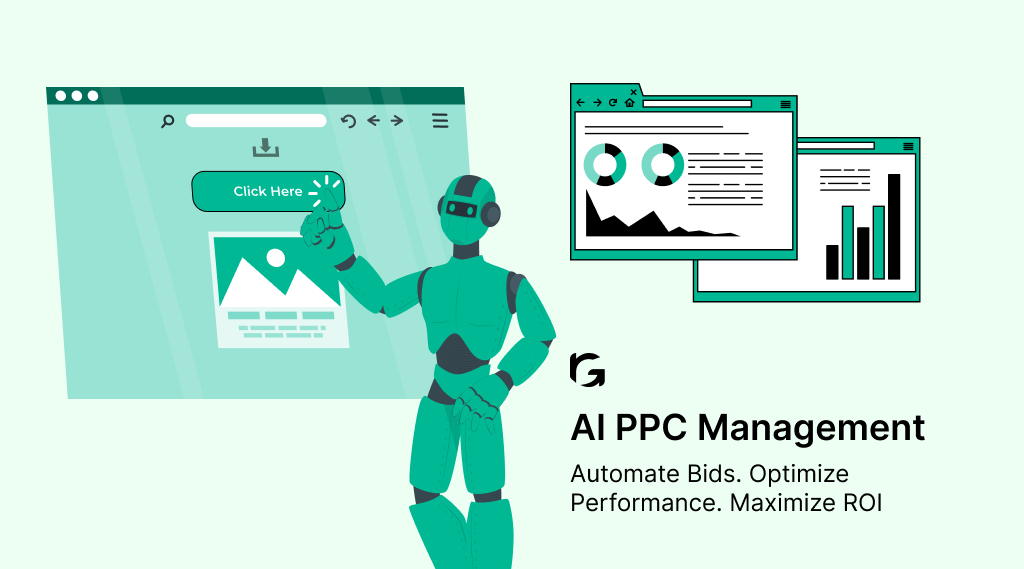

.webp)